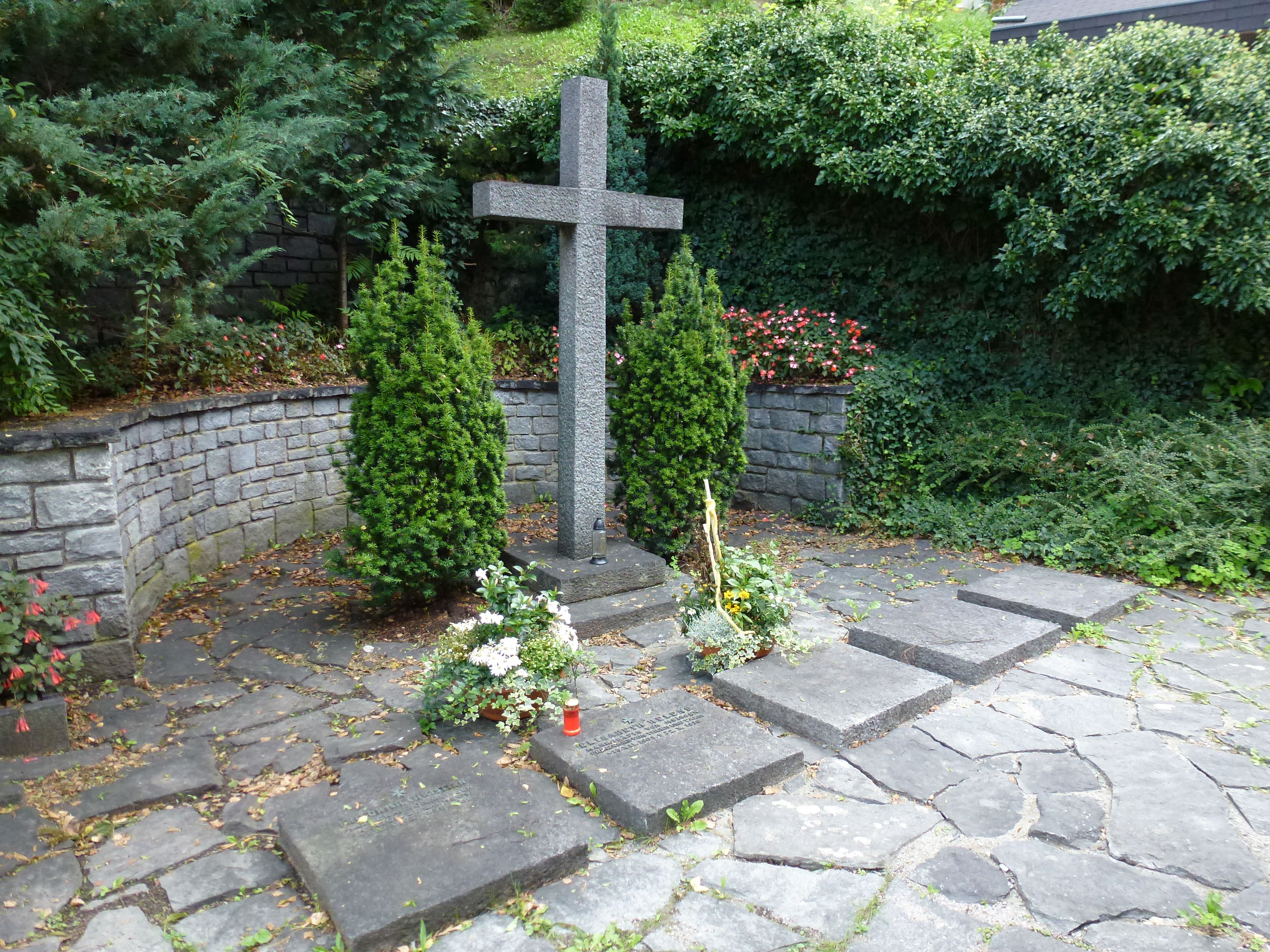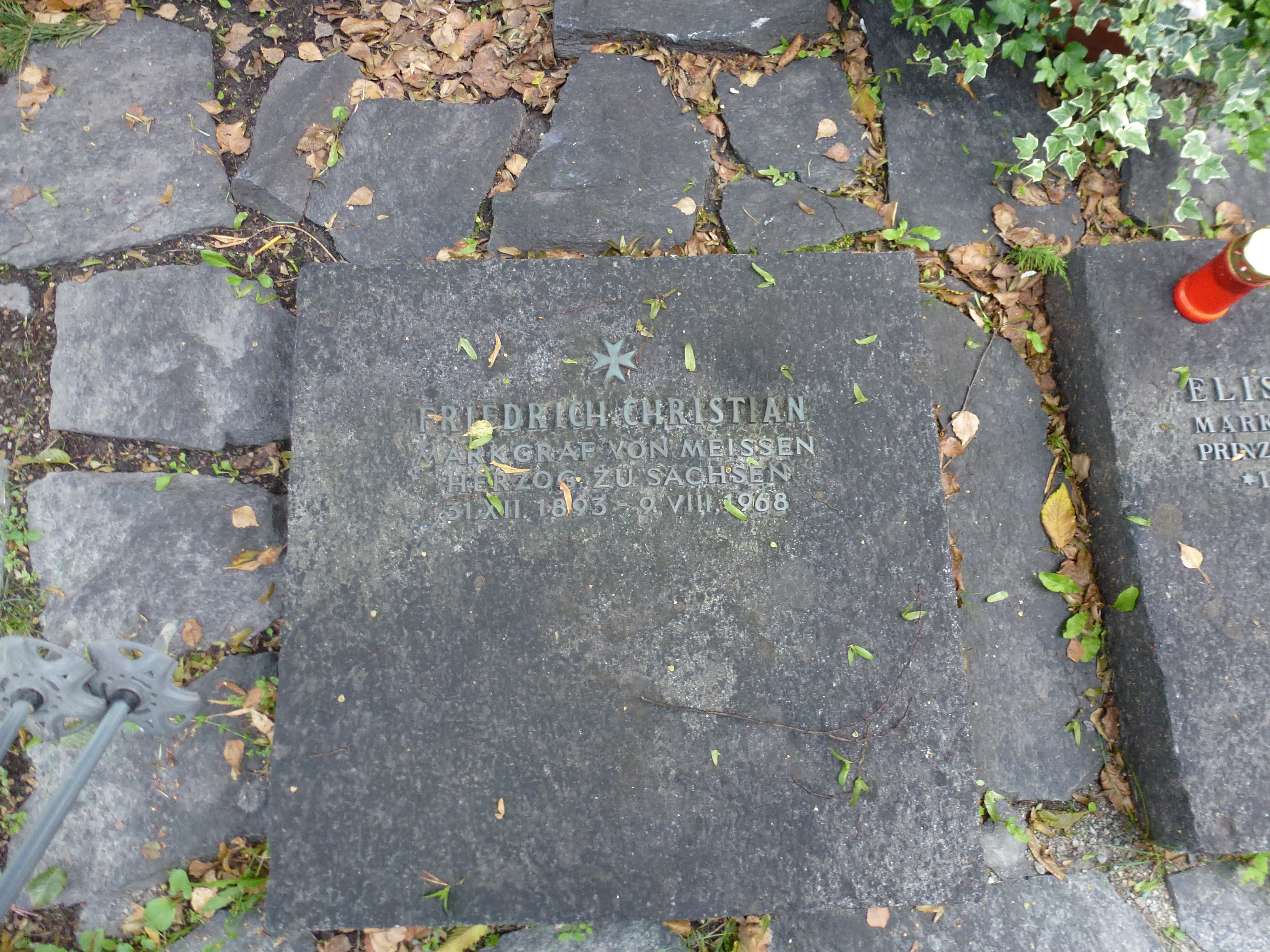1. Life
Friedrich Christian's life was marked by his royal heritage, military service, academic pursuits, and his dedication to preserving the legacy of the House of Wettin in a post-monarchical era.
1.1. Early life and education
Friedrich Christian was born in Dresden on 31 December 1893, the second son of Frederick Augustus III of Saxony, the last King of Saxony, and his wife, Archduchess Luise, Princess of Tuscany. Following a long-standing tradition of the House of Wettin, he was appointed a lieutenant in the 1st Royal Saxon Leib-Grenadier Regiment No. 100 at the young age of 10. In 1913, he continued his military education at the Military Academy in Dresden.

1.2. Military career and diplomatic missions
During World War I, Friedrich Christian served on the German General Staff on the Western Front. For his service and bravery, he received several military medals. Possessing a remarkable gift for languages, he was also dispatched on significant diplomatic missions to various European courts. These included assignments to King Alfonso XIII of Spain, Sultan Mehmed V of Turkey, and Emperor Charles I of Austria.
In 1918, as the war neared its end, Friedrich Christian was considered as one of several potential candidates for the prospective Kingdom of Lithuania. Following the defeat of the German Empire in World War I, his father abdicated on 13 November 1918. Friedrich Christian then took on the responsibility of leading the Saxon army back to Germany from their positions in Belgium and France, where they were subsequently demobilized in Fulda.
1.3. Post-WWI academic and family life
After the end of World War I and the abolition of the monarchy, Friedrich Christian transitioned from military life to academic pursuits. He embarked on a study of law at several universities, including the University of Cologne, the University of Freiburg, the University of Wrocław, and the University of Würzburg. His academic interests culminated in a PhD thesis focusing on the work of Nicholas of Cusa, a prominent figure whose contributions significantly influenced the development of canon law in the late Middle Ages.
During his studies in Breslau, he became a member of the Catholic student union KDSt.V. WinfridiaGerman. However, he later resigned his membership in 1928 or 1929 due to substantive disagreements. On 9 February 1920, he joined another Catholic student union, the KDSt.V. Thuringia WürzburgGerman. It was here that he met Princess Elisabeth Helene of Thurn and Taxis (1903-1976), who was an honorary chairwoman of the Thuringian Lady Student Federation. Elisabeth Helene was the daughter of Albert, 8th Prince of Thurn and Taxis and his wife Archduchess Margarethe Klementine of Austria. Friedrich Christian and Elisabeth Helene were married on 16 June 1923 in Regensburg.
After completing his doctoral studies, he began a career as a private teacher specializing in the history of art. Around this time, his father entrusted him with the management of the family's extensive holdings in Saxony and Silesia.
1.4. Head of the Royal House of Saxony
A significant turning point in Friedrich Christian's life came in 1923 when his older brother, Georg, Crown Prince of Saxony, made the decision to renounce his succession rights and join the Jesuit Order as a priest. This made Friedrich Christian the heir apparent to the headship of the House of Wettin. When his father, King Frederick Augustus III, died on 12 February 1932, Friedrich Christian formally succeeded him as the head of the Royal House of Saxony. As the head of the Albertine branch of the House of Wettin, he adopted the traditional ceremonial title of Friedrich Christian, Margrave of Meissen.
1.5. Proposal for the Polish throne
In 1933, the Polish government reportedly considered offering Friedrich Christian the throne of Poland, suggesting he become the King of Poland. This proposition stemmed from historical ties, as the Electorate of Saxony and the Polish-Lithuanian Commonwealth had previously been united under a personal union during the 18th century. However, the proposal for a revived Polish monarchy under Friedrich Christian ultimately did not come to fruition. The escalating political turmoil with the rise of Adolf Hitler and the Nazi Party in Germany, followed by the outbreak of World War II and the subsequent establishment of a Communist government in Poland after the war, rendered such a restoration impossible.
1.6. Later life and activities
In 1937, Friedrich Christian and his family moved to Wachwitz Castle in Dresden-Wachwitz, where they resided until 1945. The castle remarkably survived the devastating bombing raids on Dresden in 1945, and Friedrich Christian provided refuge for many survivors. Later that year, the family was forced to relocate. They traveled via Hof and Regensburg to Bregenz, where their two youngest children had been living since 1940. Due to their close connections with the French occupying forces, they were able to facilitate the move of figures such as the renowned composer Richard Strauss to Switzerland.
In 1955, relatives from the Thurn und Taxis family assisted them in finding a new home in the Harlaching borough of Munich. It was here that Friedrich Christian, together with his sons Albert and Maria Emanuel, members of the Military Order of St. Henry, the Association of People from Dresden, and the Munich chapter of the association of HeimatvertriebeneGerman (expellees), co-founded the Studiengruppe für Sächsische Geschichte und Kultur e.V.German, or "Study group for Saxon history and culture." This organization grew to become one of the largest historical societies in West Germany. Had the monarchy been restored, he would have been known as King Friedrich Christian I.
2. Personal life and family
Friedrich Christian's personal life was centered around his marriage and the family he built, extending his long and distinguished royal lineage.
2.1. Marriage and children
Friedrich Christian married Princess Elisabeth Helene of Thurn and Taxis on 16 June 1923, in Regensburg. Elisabeth Helene (1903-1976) was the daughter of Albert, 8th Prince of Thurn and Taxis and Archduchess Margarethe Klementine of Austria. The couple had five children:
- Maria Emanuel, Margrave of Meissen (born 31 January 1926, died 23 July 2012), who succeeded his father as head of the House of Wettin. He married Princess Anastasia of Anhalt in 1962 but had no issue.
- Princess Maria Josepha of Saxony (born 20 September 1928, died 18 May 2018). She did not marry but had one daughter.
- Princess Anna of Saxony (born 4 May 1929, died 13 March 2012). She married Roberto de Afif in 1952 and had three sons. She is considered the founder of the Saxe-Gessaphe line.
- Albert, Margrave of Meissen (born 30 November 1934, died 6 October 2012). He married Elmira Henke in 1980 but had no issue. He also briefly served as head of the House of Wettin.
- Princess Mathilde of Saxony (born 17 January 1936, died 23 March 2018). She married Prince Johannes Heinrich of Saxe-Coburg and Gotha-Koháry in 1968 and divorced him in 1993. They had one son, who is now deceased.
2.2. Ancestry
Friedrich Christian's noble lineage can be traced through his parents, grandparents, and beyond, connecting him to numerous European royal and aristocratic houses:
- His parents were Frederick Augustus III of Saxony and Archduchess Luise, Princess of Tuscany.
- His paternal grandparents were George of Saxony and Infanta Maria Anna of Portugal.
- His maternal grandparents were Ferdinand IV, Grand Duke of Tuscany and Princess Alice of Bourbon-Parma.
3. Death
Friedrich Christian died on 9 August 1968, in Samedan, Switzerland. He was interred outside the Royal Chapel in Königskapelle, located in Karrösten, North Tyrol, a traditional burial site for members of the House of Wettin.


4. Legacy and reception
Friedrich Christian's legacy is primarily defined by his steadfast leadership of the House of Wettin in the post-monarchical era and his significant contributions to the preservation of Saxon history and culture.
4.1. Role as head of the House of Wettin
As the head of the House of Wettin following the abolition of the Saxon monarchy, Friedrich Christian played a crucial role in maintaining the identity and traditions of the former royal family. Despite no longer holding sovereign power, he dedicated himself to upholding the heritage of the Wettin dynasty and fostering connections with the former subjects of the Kingdom of Saxony. His leadership provided a symbolic continuity for the house during a period of profound historical change.
4.2. Contributions to Saxon history and culture
Friedrich Christian's most notable contribution to cultural preservation was his active role in the establishment and support of the "Study group for Saxon history and culture" (Studiengruppe für Sächsische Geschichte und Kultur e.V.German). Co-founded in Munich, this organization became one of the largest historical societies in West Germany, dedicated to researching, promoting, and preserving the rich historical and cultural heritage of Saxony. His involvement underscored his deep commitment to scholarship and the cultural legacy of his homeland.